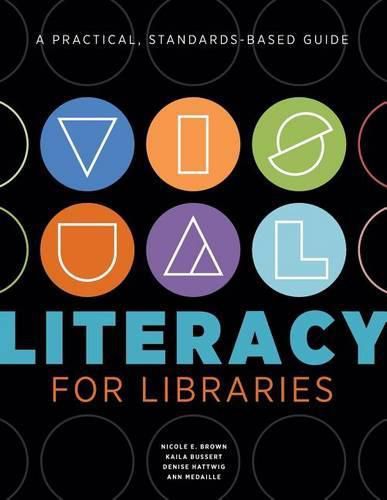Readings Newsletter
Become a Readings Member to make your shopping experience even easier.
Sign in or sign up for free!
You’re not far away from qualifying for FREE standard shipping within Australia
You’ve qualified for FREE standard shipping within Australia
The cart is loading…






This title is printed to order. This book may have been self-published. If so, we cannot guarantee the quality of the content. In the main most books will have gone through the editing process however some may not. We therefore suggest that you be aware of this before ordering this book. If in doubt check either the author or publisher’s details as we are unable to accept any returns unless they are faulty. Please contact us if you have any questions.
The importance of images and visual media in today’s culture is changing what it means to be literate in the 21st century. Digital technologies have made it possible for almost anyone to create and share visual media. Yet the pervasiveness of images and visual media does not necessarily mean that individuals are able to critically view, use, and produce visual content. The ACRL Visual Literacy Competency Standards for Higher Education were developed to address these distinct characteristics of images and visual media. Based on those standards, this book provides librarians and instructors with the tools, strategies, and confidence to apply visual literacy in a library context. Readers will not only learn about ways to develop students’ visual literacy, but also how to use visual materials to make their instruction more engaging. Ideal for the busy librarian who needs ideas, activities, and teaching strategies that are ready to implement, this book shows how to challenge students to delve into finding images, using images in the research process, interpreting and analyzing images, creating visual communications, and using visual content ethically; provides ready-to-go learning activities for engaging critically with visual materials; offers tools and techniques for increasing one’s own visual literacy confidence; and gives strategies for integrating, engaging with and advocating for visual literacy in libraries. With this book’s guidance, academic professionals can help students master visual literacy, a key competency in today’s media-saturated world, while also enlivening instruction with visual materials.
$9.00 standard shipping within Australia
FREE standard shipping within Australia for orders over $100.00
Express & International shipping calculated at checkout
This title is printed to order. This book may have been self-published. If so, we cannot guarantee the quality of the content. In the main most books will have gone through the editing process however some may not. We therefore suggest that you be aware of this before ordering this book. If in doubt check either the author or publisher’s details as we are unable to accept any returns unless they are faulty. Please contact us if you have any questions.
The importance of images and visual media in today’s culture is changing what it means to be literate in the 21st century. Digital technologies have made it possible for almost anyone to create and share visual media. Yet the pervasiveness of images and visual media does not necessarily mean that individuals are able to critically view, use, and produce visual content. The ACRL Visual Literacy Competency Standards for Higher Education were developed to address these distinct characteristics of images and visual media. Based on those standards, this book provides librarians and instructors with the tools, strategies, and confidence to apply visual literacy in a library context. Readers will not only learn about ways to develop students’ visual literacy, but also how to use visual materials to make their instruction more engaging. Ideal for the busy librarian who needs ideas, activities, and teaching strategies that are ready to implement, this book shows how to challenge students to delve into finding images, using images in the research process, interpreting and analyzing images, creating visual communications, and using visual content ethically; provides ready-to-go learning activities for engaging critically with visual materials; offers tools and techniques for increasing one’s own visual literacy confidence; and gives strategies for integrating, engaging with and advocating for visual literacy in libraries. With this book’s guidance, academic professionals can help students master visual literacy, a key competency in today’s media-saturated world, while also enlivening instruction with visual materials.